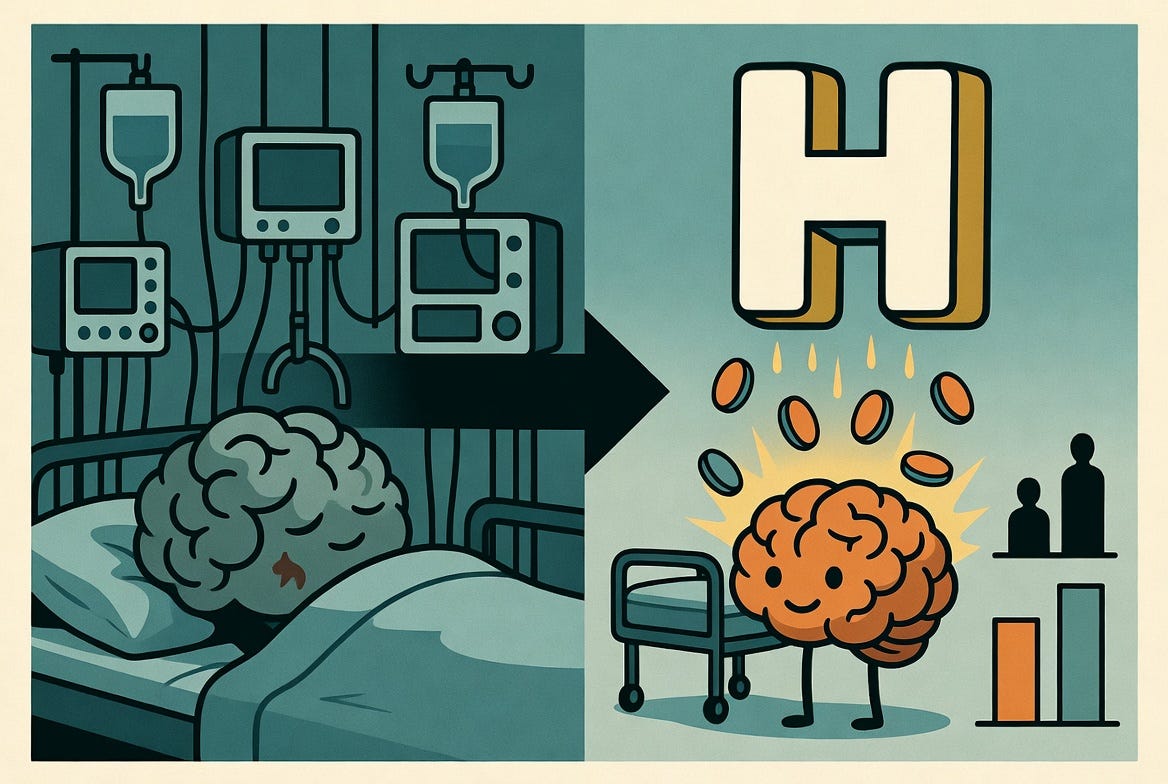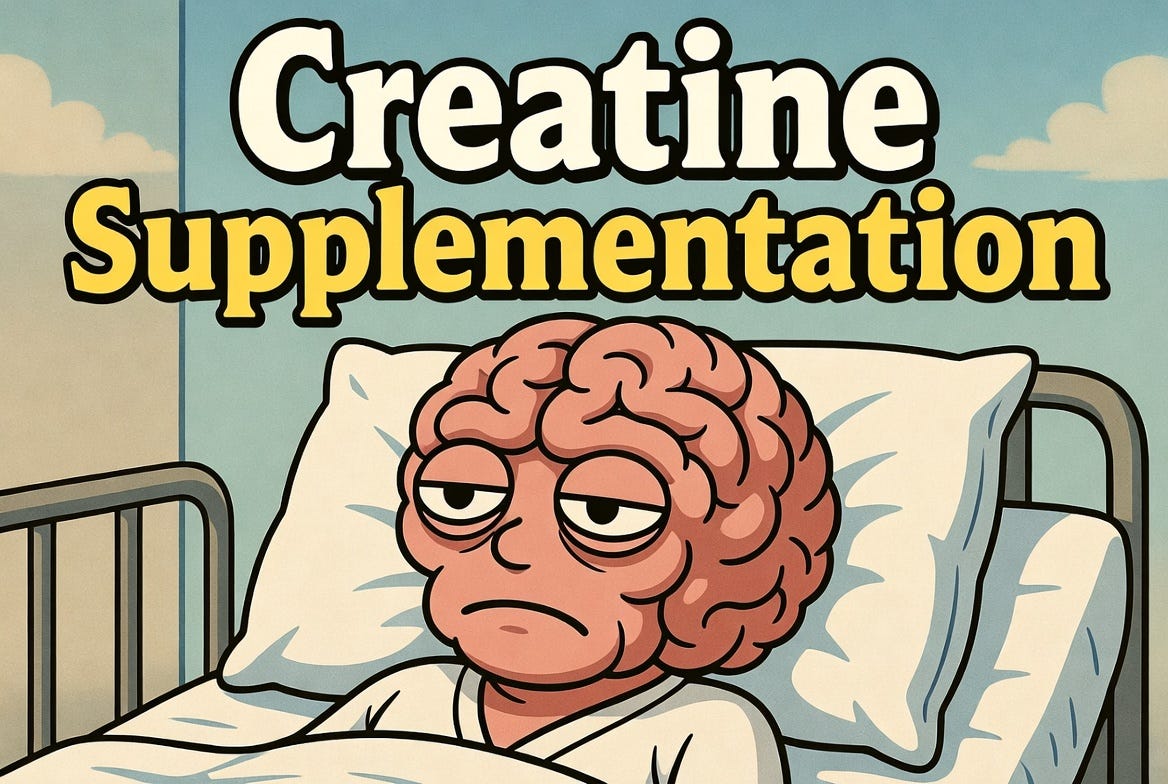High-Dose Creatine for Kids with Severe Brain Injury: A Forgotten 2006 Pilot That Still Holds Up
A 2006 pilot gave severely brain-injured kids high-dose creatine for 6 months: ICU stays halved, recovery sped up, good outcomes doubled, zero side effects—yet it's still ignored today.
A small but intriguing 2006 pilot study suggests high-dose creatine might speed up cognitive and functional recovery in children and adolescents after severe traumatic brain injury. It does so without obvious short-term harm.
“Creatine administration was positively associated with length of intensive care stay and treatment cost reduction. The fact that complications related to creatine administration were not reported was encouraging.”
From the 2006 pilot trial
Traumatic brain injury hits kids hard. Unlike adults, their brains are still wiring themselves, so the same impact can disrupt development for years. Doctors have hunted for safe ways to protect neurons and speed healing. One candidate that keeps popping up? Creatine. People know it as the same compound gym-goers load for muscle gains.
Turns out it also fuels brain cells, buffers energy crashes, and may blunt excitotoxicity after trauma. An older Greek trial from 2006 put it to the test in real pediatric ICU patients, and the results still catch my eye. This holds true especially now that 20 g/day creatine loading is all the rage again for “cognitive enhancement.” (Full disclosure: I tried it once. Felt like my brain was vibrating. Never again.)
What the Trial Actually Did
This open-label randomized pilot enrolled 39 children and adolescents (ages 1 to 18 years) with severe TBI (Glasgow Coma Scale ≤8) at a single center in Greece. Kids were randomized to either standard care or standard care plus creatine: 0.4 g/kg/day (roughly 20 to 40 g for a teen) given enterally for six full months. Primary outcomes were serial Disability Rating Scale (DRS) and Glasgow Outcome Scale-Extended Pediatric version at one, three, and six months. They also tracked ICU days, ventilator days, hospital costs, and a bunch of secondary functional measures (communication, self-care, cognition, etc.).
The creatine group showed faster drops in DRS scores. This means less disability, especially in the first week and out to three months. By six months the gap narrowed, but trends still favored creatine. ICU stay dropped from a median 11 days in controls to 6 days in the creatine arm. Ventilator days, total hospital costs, and incidence of complications like seizures or infections? All trended lower, though the small sample kept most p-values just shy of significance.
Perhaps the clearest signal came from the functional sub-scores: at six months the creatine kids were roughly twice as likely to score in the “complete recovery” or “mild impairment” bins across cognition, personality/behavior, and self-care compared with controls.
Why It Matters and What You Can Do
Severe TBI in kids isn’t common, thank goodness, but when it happens the stakes are sky-high. Even modest reductions in ICU time and disability can change a child’s entire trajectory. Creatine is dirt-cheap, widely available, and has a remarkably clean safety record in healthy people at these doses. Animal data keep piling up showing it preserves ATP, reduces mitochondrial permeability transition, and limits secondary damage. These mechanisms don’t care whether the patient is a rat or a 12-year-old.
For everyday readers chasing longevity or performance, this trial is a reminder that creatine isn’t just a muscle supplement. Your brain is the most energy-hungry organ you own, and it stores its own pool of phosphocreatine. Trauma, stroke, hypoxia, even chronic sleep deprivation all create situations where that buffer can run dry fast. Stockpiling a little extra seems to buy neurons time.
If you’re already supplementing for the gym, you’re probably giving your brain a quiet insurance policy too. Most adults stick to 3 to 5 g/day maintenance, but short loading phases (20 g/day split into four doses for 5 to 7 days) are well tolerated by the majority. Just stay hydrated, cycle if you want, and pay attention to how you feel. Some of us (raises hand) get jittery or wired at higher doses.
What’s Next on the Horizon
Nearly 20 years later (as of 2025), we still don’t have a large, multi-center, double-blind pediatric trial. The 2006 study was tiny and open-label. Adult TBI trials with creatine have been mixed; some show benefit, others wash out. A few ongoing or recent studies are looking at creatine in concussion and sub-concussive impacts in athletes, and the military keeps funding work on blast injury. Until bigger data land, creatine remains “promising but unproven” in acute brain injury.
Safety, Ethics, and Caveats
This was a pilot with only 39 kids. Open-label design means bias could creep in. The creatine group started with slightly lower injury severity on paper, though not statistically different. Long-term outcomes beyond six months weren’t tracked, and we have no idea if super-physiological brain creatine actually persisted that whole time.
Also worth remembering: creatine pulls water into cells. In a swollen, injured brain that’s already fighting intracranial pressure, theoretical risk exists. Yet this trial and others haven’t seen pulmonary edema or compartment issues in practice. Still, no one is recommending you run out and dose a head-injured kid without medical supervision.
One Last Thing
If nothing else, this old paper is a solid reminder that some of the cheapest, most studied supplements on the shelf still have untapped potential for the organ that matters most. Brain energy fails first in almost every neurological crisis. Giving cells a bigger battery seems intuitively sensible. Every few years another trial nudges the evidence needle a bit further.
Explore the Full Study
Sakellaris G, Kotsiou M, Tamiolaki M, Kalostos G, Tsapaki E, Spanaki M, Spilioti M, Charissis G, Evangeliou A.
Prevention of Complications Related to Traumatic Brain Injury in Children and Adolescents With Creatine Administration: An Open Label Randomized Pilot Study.
Journal of Trauma-Injury Infection & Critical Care. 2006;61(2):322-329.
DOI: 10.1097/01.ta.0000230528.64615.5c



